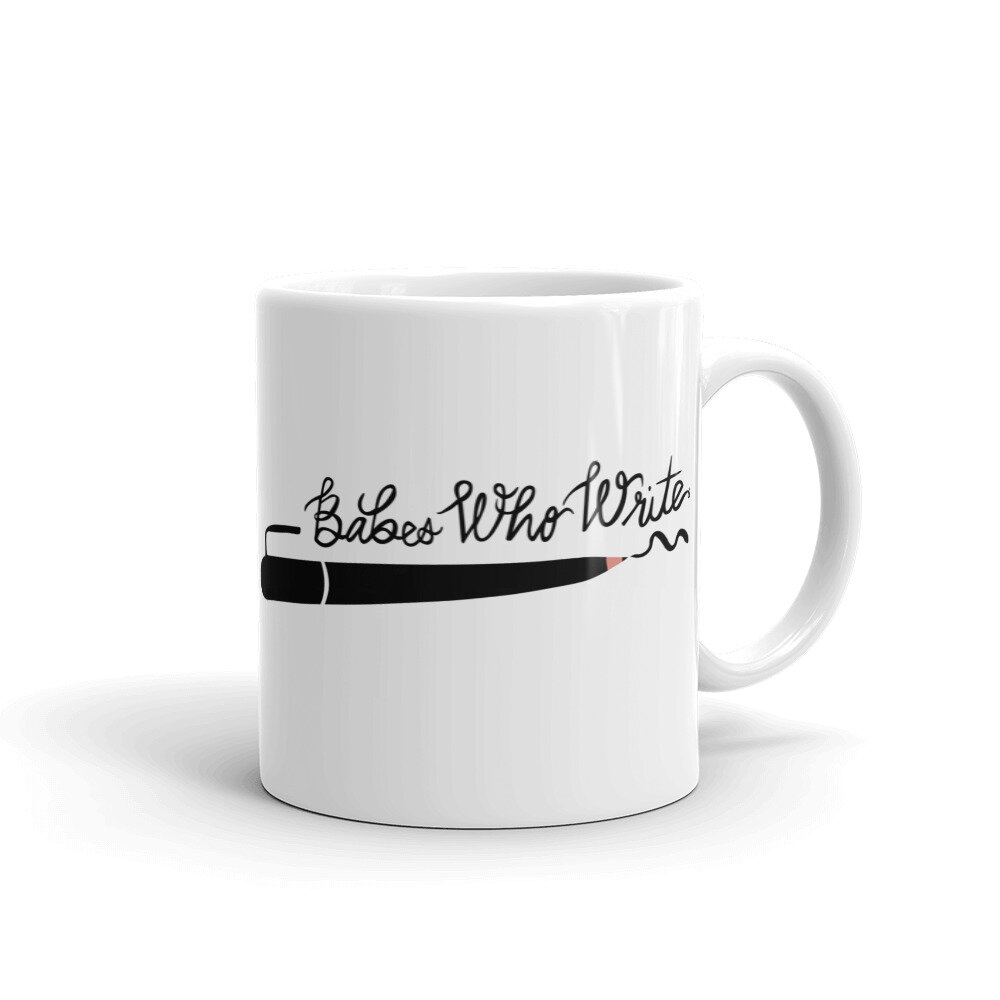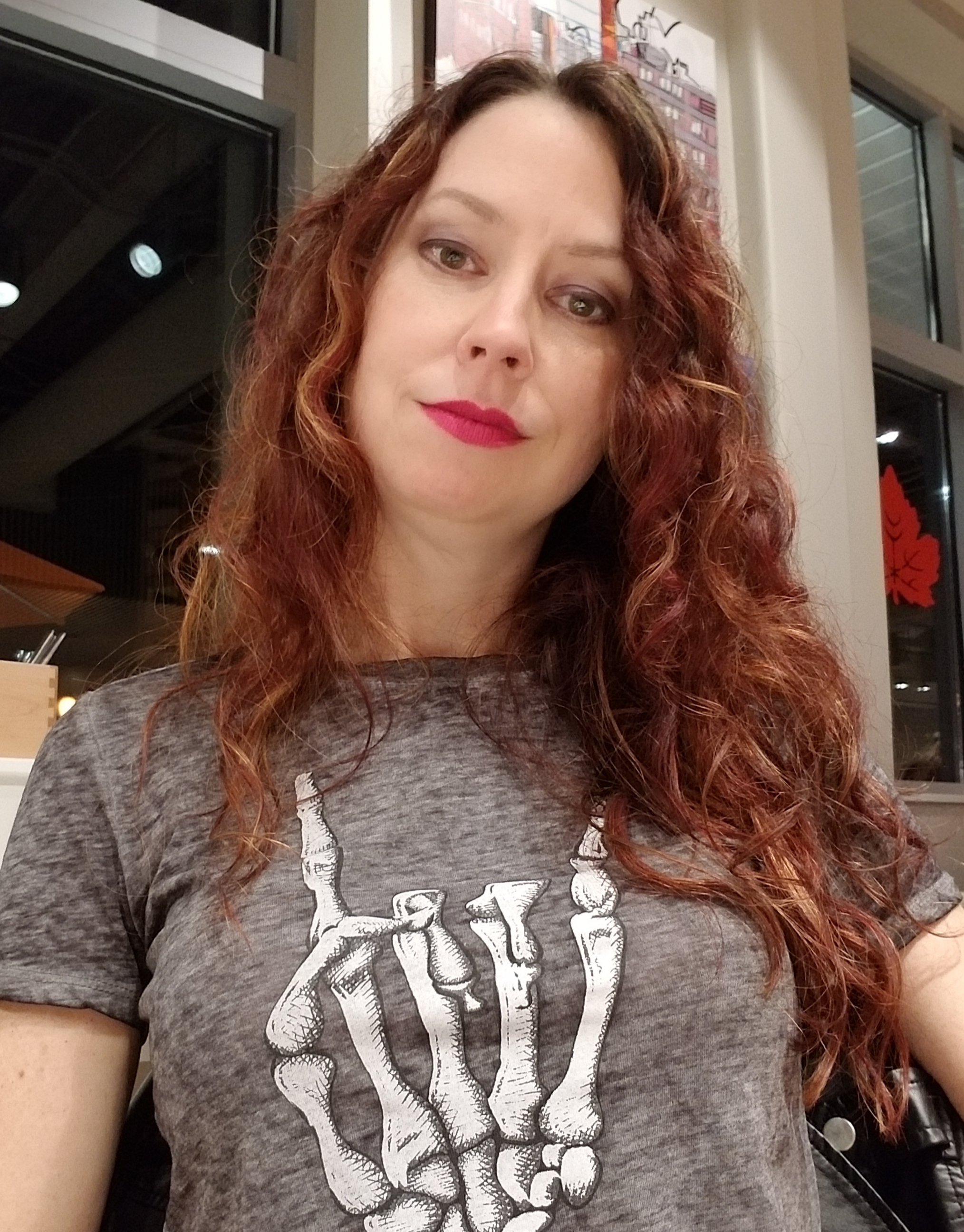Center of it All
The other day, I pinched the skin around my navel between my fingers and thumb.
“What are you doing?” my husband asked.
“Channeling self-loathing into my belly,” I replied.
I was having a bad day. A series of them, if I was to be honest, borne of months of various disappointments and stressors layered and folded in on themselves like frozen soft serve yogurt haphazardly dispensed into a bowl.
So I took it out on my body. My stomach, specifically, which I’ve always perceived as soft and squishy in my otherwise blessed-by-genetics thin, white, cis physique. The funny thing is, over the past year or so my cuddly tummy had flattened out, become hard and strong. On its good days (or rather, what I considered its good days), the muscles stood out like a giant “Don’t Fuck With Me” sign. I’d run my fingers over them, twist and turn in the mirror to create the perfect angles before taking photos with my cell phone. Not to send to anyone else, but for my own future reminders of their magnificence.
But insecurities die hard, and their origins are often impossible to discern. Unlike many women, I couldn’t point to an intergenerational fixation. My mother never commented on my appearance, unless my clothes were dirty or otherwise inappropriate. She was adamant her three daughters develop their skills and not rely on a romantic partner. “Men leave,” she would say, which was ironic considering my father is one of the most reliable men on the planet.
My mother lived a very different life before my father, however. The youngest of a large family living in a rust belt, former port town, she dropped out of high school when she became pregnant and married the baby’s father. That man, her first husband, abused and mistreated her until she found the means to take my sisters and leave.
During my teen years, my mother’s rules about heel height, makeup, earrings and contact lenses were illogical and immovable. Yet she never censored the books I read, the films I watched, or the music I enjoyed (I was a metalhead, so that’s saying something). In all, she was a strange combination of traditional authoritarian and strident feminist. Mostly, she was determined her daughters not make her mistakes.
The first time I remember expressing disdain for my midsection was a family trip to Acapulco when I was fifteen. My father took a photo of my mother and I sitting on a large rock on the beach. I wore a hot pink and white striped bikini. At the time, I stood five feet five inches tall, and weighed 110 pounds. I sucked my stomach in when he took the picture.
Ten years ago, I donated a kidney to my sister, which they removed via my belly button. Pre-surgery, I had the perfect divot of an innie, but I had no clue what it would look like afterward. In preparation, I purchased a monokini which resembled a tankini with a strip of material down the front to obscure my bisected and reconstructed navel. I wore it for the first time four weeks after the procedure.
Conventional wisdom would hold that a raised ridge of discolored flesh across the very body part I’d always disliked would put the kibosh to any baring of it, minus the shower. Yet, I quickly veered in the other direction. By the time I visited my parents at their Florida winter hideaway, I lounged at their neighborhood pool sporting a blush pink two-piece. I’d been struggling with depression, anxiety, and rage since the donation, and the decision to display my six-month old, north to south midriff scar was an act of defiance, not acceptance. On the bright side, I wasn’t holding in my stomach.
Over the course of three years and with the help of a great PTSD psychologist, I reconciled my trauma, and became an advocate for better living donor protections. But as I achieved a new balance, pubescent insecurity reasserted itself. Fortunately, the bravado I used to protect myself post-donation also served as a launching point; I found myself annoyed rather than shamed by self-criticism.
When I was diagnosed with deteriorating cervical discs two years ago, and needed to start a strength training regimen to stave off more invasive and costly interventions, I used it as an excuse to reel in my wayward abdomen. I bought a set of resistance bands, familiarized myself with youtube videos and developed a low pressure routine. Every other day, optimally, but I promised myself I wouldn’t feel guilt or shame if I missed a day. Or three. Life gets in the way. I would simply pick up where I left off.
-Christine Wright
Christine Wright is a former therapist, rock journalist, and ecommerce business tycoon (darn that economic collapse!). Now, she's a writer, actor, and greyhound whisperer who likes power tools, red shoes, and white wine. Soon, you'll be able to learn more at her new website ByChristineWright.com (for now, follow her on twitter @WrightChrisL)




















